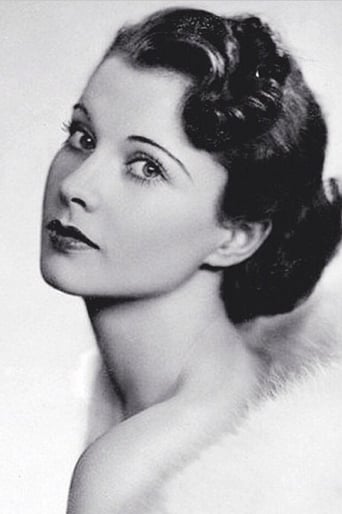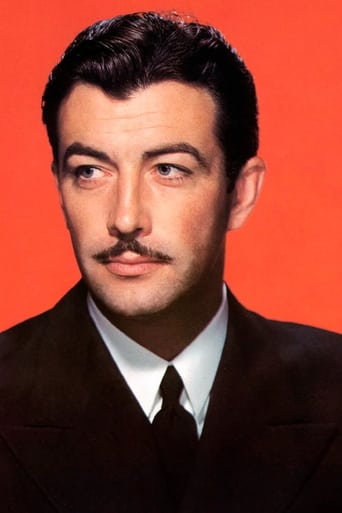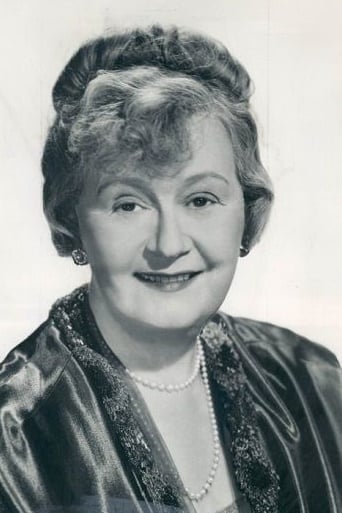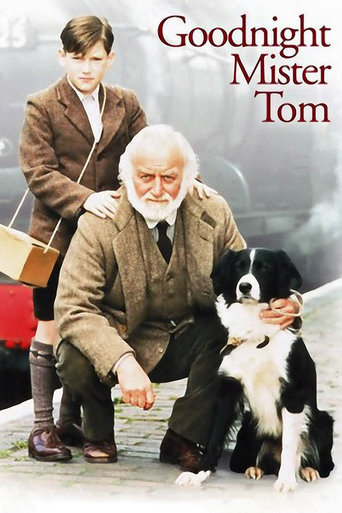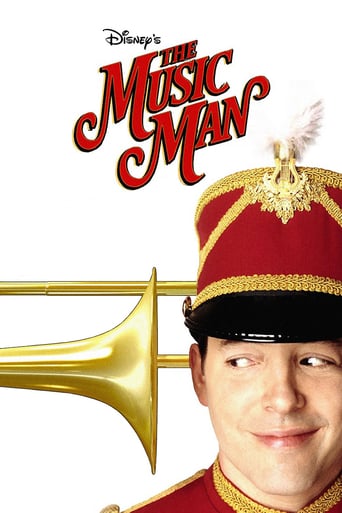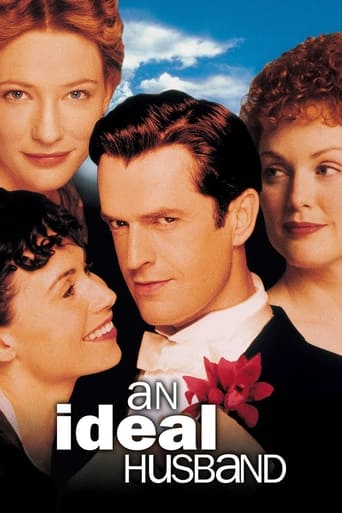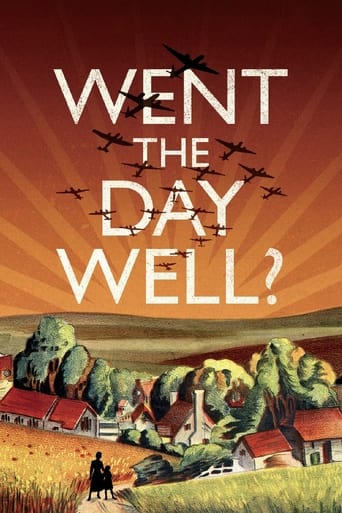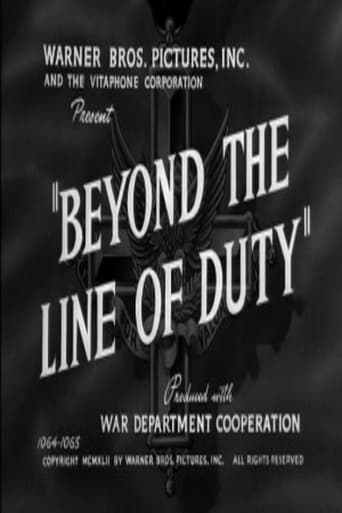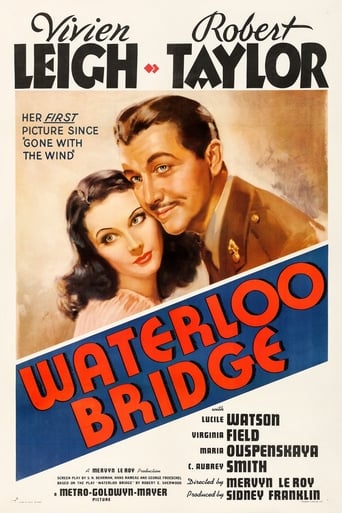

Waterloo Bridge (1940)
On the eve of World War II, a British officer revisits Waterloo Bridge and recalls the young man he was at the beginning of World War I and the young ballerina he met just before he left for the front. Myra stayed with him past curfew and is thrown out of the corps de ballet. She survives on the streets of London, falling even lower after she hears her true love has been killed in action. But he wasn't killed. Those terrible years were nothing more than a bad dream is Myra's hope after Roy finds her and takes her to his family's country estate.
Watch Trailer
Cast
Similar titles
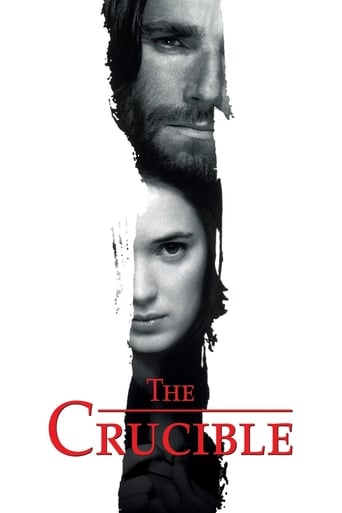
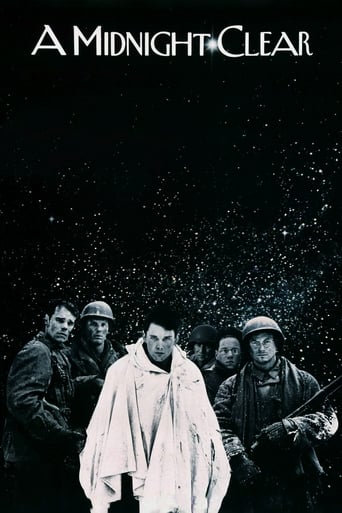
Reviews
Simply Perfect
Good movie but grossly overrated
In truth, there is barely enough story here to make a film.
It's simply great fun, a winsome film and an occasionally over-the-top luxury fantasy that never flags.
Directed by Mervyn LeRoy, based on Robert Sherwood's play, with a screenplay by S.N. Behrman, Hans Rameau, and George Froeschel, this classic, tear-jerking wartime love story, starring Robert Taylor and Vivien Leigh (reportedly her favorite), was Oscar nominated for its B&W Cinematography and Original Musical Score. The second film version of Sherwood's play, after Waterloo Bridge (1931) with Mae Clarke and Kent Douglass.Leigh plays a melancholy dancer, Myra, who meets soldier Roy Cronin (Taylor) during an air raid in World War I London, just before he's to be shipped off to the front. Given a 48 hour leave, the carefree and romantic Roy, captivated by her beauty, sweeps Myra off her feet until she too (for the first time in her life?) is optimistic about their future. He receives permission from his uncle the Duke (C. Aubrey Smith) to marry her. Unfortunately, per some red tape, they are unable to wed before Roy must leave for France. Myra attempts to return to the ballet, but her stern taskmaster (Maria Ouspenskaya) refuses to accept her back into the company, and fires fellow dancer Kitty (Virginia Field) for her outburst in support of her friend.Myra and Kitty take an apartment together where they struggle to make ends meet until Roy's mother, Lady Margaret (Lucile Watson), who had been working with the Red Cross, is able to come for a visit. Just before this meeting, however, Myra reads Roy's name on a casualty list in the newspaper. Stunned and in shock, Myra is unable to make a good impression on her would-be future mother-in-law (why wouldn't she share with her what she'd just read?!). After being consoled by the restaurant's hostess (Norma Varden, uncredited), Myra returns to Kitty who supports her financially during her depression by the only way a girl who can't find a job otherwise can. Soon, Myra comes out of her funk and realizes that Kitty has been selling herself to soldiers on leave. Naturally, she then joins this oldest profession herself. Tom Conway is the uncredited voice one hears as her first client.Later, as Myra is "greeting" the latest batch of soldiers arriving from the front at the train station, she sees Roy. Apparently, there was a reporting error made when he'd lost his dog tags. Ignorant of what's transpired in her life, Roy is thrilled to see Myra and figures they'll just pick up where they left off. Promising never to leave her again, Roy insists on taking Myra to their country estate, to more properly introduce her to his family and friends. Though Myra struggles with what to tell Roy of her recent past, she also sees an opportunity to finally "make it" and promises Kitty, before she leaves, to set her up well when she returns.Though things do not go smoothly initially at the Cronin estate for Myra; some of the local families had hoped Roy would marry one of their daughters and are not very accepting of the newcomer from outside their caste. However, with help from Lady Margaret, who'd given her another chance per Roy's obvious love for Myra (and vice versa) and the Duke, who insists on a showy dance with her, Myra is accepted. It is at this point that Myra's conscience gets the best of her and she comes clean to Lady Margaret, whom she asks never to tell Roy. Myra then departs early the next morning, leaving Roy clueless.Of course, Roy must find out what happened to the love of his life. He returns to London where he finds Kitty. Convinced of his love for Myra, Kitty reveals the truth of Myra's nightlife to Roy by taking him on a search for her through one seedy bar after another. Meanwhile, Myra is on Waterloo Bridge, where she's seen giving up; she walks rapidly past several troop trucks as they drive by before she throws herself under the wheels of one of them. The film ends with (now) Colonel Roy, many years later at the beginning of World War II, fingering the good luck charm Myra had once given him.
SPOILER ALERT!The landmark bridge is used by the original playwright (Robert Sherwood) to create a sense of structural unity to this very tragic story. This is where the film opens, in the midst of World War II, as Captain Roy Cronin (Robert Taylor) reminisces about his past. Then a flashback immediately delivers us to the very same spot, where he meets ballerina Myra Lester (Vivien Leigh) during the chaos and panic of an air raid during the first World War. The bridge is also the site where Myra meets her doom, first when she is compelled to negotiate with her first "client" as an impoverished prostitute and then a second time with her dramatic and heartbreaking final end. At the film's conclusion, we are once again brought to the bridge with Captain Cronin. The flashback of his life ends, and he, along with the rest of Britain and much of the world, must contend with yet another major, catastrophic war. Somehow, life must go on.The acting in this film is exceptional, not only on the part of the two leads but of the entire supporting cast. Depending on the material that is handed to her, Ms. Leigh is almost always captivating. More about her later. As to Mr. Taylor, I believe that this must rate as one of his finest performances. One of the most unforgettable moments in this film, if not in all of cinema, is his facial expression when he finally, fully understands the kind of life that Myra was forced to lead after she mistakenly believes that he was killed in action. It should not surprise us that this film and the roles that they played were considered the very favorites of both leads. We can see it in every word and in every emotion that they express so beautifully. Clearly, Ms. Leigh and Mr. Taylor love what they are doing, and we love watching them do it.Their supporting cast also excels here. The versatile and intriguing Maria Ouspenskaya, who has played every kind of role under the sun from the kindly Baroness in "Dodsworth" to the spooky Maleva in "The Wolf Man", is despicable as the tyrannical, even inhuman ballet director who sets much of the tragic action in motion by her cruel and obsessive behavior. At the other end of the likable meter is C. Aubrey Smith as Roy's powerful but compassionate relation. Virginia Field is excellent as Myra's devoted best friend. Finally, Lucile Watson is very strong in her role of Roy's aristocratic mother, Lady Margaret. The two critical scenes in which she appears demand a wide range of complex emotions, and her wonderful acting is a valuable contribution to the entire movie.I was struck by the extreme contrast of the poverty and near starvation of Myra and Kitty, on one hand, and the wealth and opulence of Roy's family and neighbors. This contrast of what life actually became for Myra and what life could have been for Myra is a major factor in the immense tragedy of this film. Somehow, the situation reminded me of the circumstances behind "A Place in the Sun", but that is a different review for another time. If only the waitress in the restaurant didn't hand Myra the newspaper, her life would have turned out totally different. Just one, slight gesture by an innocent bystander determines the entire fate of two very important lives. This is excellent writing, and it takes a very gifted cast to elevate the script even higher, along with our interest as engrossed viewers.No review should omit the contribution of Herbert Stothart's beautiful musical score, especially at the most critical moments of the film, including Myra's discovery of the erroneous report of Roy's death and when we want to hope, beyond all hope, that Myra and Roy would live happily ever after with the melancholy interpretations of "Auld Lang Syne" and "Let Me Call You Sweetheart" in the background during the country estate segment. I don't know about you, but my heart was already breaking at Lady Margaret's party, and it must have been because of that haunting music as it quietly suggested the tragic events that would soon follow.Credit goes to Mervyn LeRoy, as director, for the quality of the entire film. The mechanized parade of Red Cross lorries on the bridge near the end was another ominous warning to the viewers of the tragedy that would soon ensue.Vivien Leigh was taken from this world far too soon. I count only about 18 total works in her remarkable but much too short film career. While I would love to see more of her, I value what we do have and what we can continue to appreciate even after many, many viewings.
Mainly I wanted to know how Taylor found that lone lost suicide survivor, the kewpie doll. It had to have been crushed during cleanup of the accident scene but of course, he could have just purchased another good luck charm. This, among other non-sequitur questions, remain after viewing this film. Another, after reading of her fiancé's death in the paper, how could she contain her grief to Mama given that she was a dancer, NOT an actress! A simple search for her name would turn up a kid or two unless she had changed her name which most fallen women do, right? Hmmmm, doesn't make much sense to resort to this profession when so much help was available. Perhaps the unwritten script is that she secretly liked to dance naked for money? I was most impressed with how they aged Taylor over 20 plus years, a hint of baby powder on the mustache and voila! vs Leigh in "That Hamilton Woman" end scene.Despite the above mentioned issues, I really enjoyed the film immersed in it's many foibles. And, oh I forgot the dress code of the early 20th century in England, good thing Downton Abbey got it right! Have you ever fallen in love with such urgency and not just based on attraction alone? It is quite a spectacular moment in life and very rare indeed but occurs more in real life than on screen truth be told.Leigh never looked more ravishing in exquisite gowns, ballet attire, and close ups were her dearest ally. What a refreshing face, so expressive and eyes divine. Even Ol Blanche was positively lovely. A great loss to the film world with her limited productions.Be prepared for a tear jerker though, the many decisions in life that forced her to depart reality were reminiscent of that crazy unpredictable element named, Fate. Many feel they were irresponsible, rash decisions with little forethought but how easy it is to judge.High recommend for Leigh fans, a new take on a Ouspenskaya role (LOL), and several lost in dreamworld dance moments that will be retained in memory.
I too was struck by the anachronistic costumes (WWII garb for a WWI story) as well as by the inaccurate depiction of WWI airwars and bomb shelters as noted by one of your reviewers. I thought another reviewer's point well taken as to how did Taylor actually reacquire the little good luck charm after Leigh's death. But Taylor's Americanism as noted by another of your reviewers was accounted for by Sherwood's original play protagonist as actually being an American (himself.) So that we can accept.But I noted too that while your reviewers referred to Sherwood's original 1930 play as well as to the 1931 James Whale original movie version an important predecessor to this story seems to have escaped everyone, namely Arthur Wing Pinero's celebrated play, "The Second Mrs. Tanqueray" (1893). In this play, famous in its time for its faux-realism and its eagerness to put the question of prostitution onto the stage, a lady with a doubtful past likewise aspires to membership by marriage into the aristocracy. But when her past is discovered she too chooses suicide as the only way out. The parallels between SMT and WB struck me immediately. Perhaps WB is even more directly related to SMT than either Sherwood or Whale.Herbert Stothart's score was quintessentially typical. HS' method was usually to take familiar melodies (such as "Auld Lang Syne") and doll them up with fantasy orchestrations. You can usually tell a Stothart score when you hear it.
